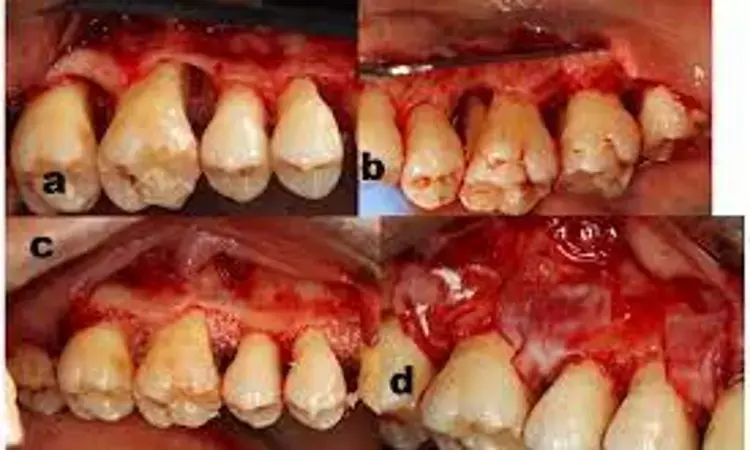- Home
- Medical news & Guidelines
- Anesthesiology
- Cardiology and CTVS
- Critical Care
- Dentistry
- Dermatology
- Diabetes and Endocrinology
- ENT
- Gastroenterology
- Medicine
- Nephrology
- Neurology
- Obstretics-Gynaecology
- Oncology
- Ophthalmology
- Orthopaedics
- Pediatrics-Neonatology
- Psychiatry
- Pulmonology
- Radiology
- Surgery
- Urology
- Laboratory Medicine
- Diet
- Nursing
- Paramedical
- Physiotherapy
- Health news
- Fact Check
- Bone Health Fact Check
- Brain Health Fact Check
- Cancer Related Fact Check
- Child Care Fact Check
- Dental and oral health fact check
- Diabetes and metabolic health fact check
- Diet and Nutrition Fact Check
- Eye and ENT Care Fact Check
- Fitness fact check
- Gut health fact check
- Heart health fact check
- Kidney health fact check
- Medical education fact check
- Men's health fact check
- Respiratory fact check
- Skin and hair care fact check
- Vaccine and Immunization fact check
- Women's health fact check
- AYUSH
- State News
- Andaman and Nicobar Islands
- Andhra Pradesh
- Arunachal Pradesh
- Assam
- Bihar
- Chandigarh
- Chattisgarh
- Dadra and Nagar Haveli
- Daman and Diu
- Delhi
- Goa
- Gujarat
- Haryana
- Himachal Pradesh
- Jammu & Kashmir
- Jharkhand
- Karnataka
- Kerala
- Ladakh
- Lakshadweep
- Madhya Pradesh
- Maharashtra
- Manipur
- Meghalaya
- Mizoram
- Nagaland
- Odisha
- Puducherry
- Punjab
- Rajasthan
- Sikkim
- Tamil Nadu
- Telangana
- Tripura
- Uttar Pradesh
- Uttrakhand
- West Bengal
- Medical Education
- Industry
Stem cells in tissue engineering beneficial for regeneration of periodontal defects

The application of stem cells in tissue engineering exhibits a significant advantage in the regeneration of periodontal defects according to a recent study published in the Journal of Evidence-Based Dental Practice.
Classically, periodontal defects have been differentiated based on bone resorption patterns into "supraosseous" ("suprabony") and "infraosseous" ("infrabony") (Goldman & Cohen, 1958). These authors defined suprabony defects as those where the base of the pocket is located coronal to the alveolar crest.
A study was conducted to systematically evaluate the application of stem cells in tissue engineering for the regeneration of periodontal defects and to provide a basis for clinical application.
PubMed, The Cochrane Library, EMbase, SinoMed, CNKI and Wanfang databases were searched for randomized controlled trial (RCT) studies on periodontal defect regeneration using bone marrow mesenchymal stem cells, adipose tissue-derived stem cells, periodontal ligament stem cells (PDLSCs), dental pulp stem cells (DPSCs), gingival mesenchymal stem cells, stem cells from the apical papilla and other odontogenic stem cells. Chinese and English literature as of May 9, 2021 (without limitation on retrieving starting date) were searched and included RCT studies were followed for at least 3 months. Two reviewers independently screened the literature, extracted basic research information, the situation of the research object and outcome measures including probing depth (PD), clinical attachment level (CAL), bone defect depth (BDD) and gingival recession (GR). Cochrane Handbook for Systematic Reviews of Interventions (Version 5.1.0) was used to evaluate bias risk in included studies and a Meta-analysis was performed using RevMan 5.4 software.
The results of the study are:
- A total of 182 teeth were included in 7 RCT studies.
- The experimental group was treated with stem cell tissue engineering technology (87 cases), and the control group was treated with conventional periodontal regeneration therapy without stem cell
- In the meta-analysis, a significant difference between experimental and control groups was found for PD
- By observing the 4 outcome indicators of periodontal tissue regeneration, the improvement of CAL was the best, while the improvement of GR was poor. In the subgroup analysis of follow-up time, PD improved best at 6 months compared with other follow-up times
- However, in the subgroup analysis of CAL, BDD and GR, there was no statistical significance among follow-up time.
Thus, compared with conventional periodontal regeneration therapy, the application of stem cells in tissue engineering exhibits a significant advantage in promoting periodontal defect regeneration and allows for complete periodontal regeneration possibly. Due to limitations related to the number and quality of the included studies, additional large-sample and high-quality clinical studies are needed to support future meta-analyses.
Reference:
Yuhao zhang, wenheng zhao, liyang jia, nan xu, yan xiao, qiyan li,The application of stem cells in tissue engineering for the regeneration of periodontal defects in randomized controlled trial: a systematic review and meta-analysis, Journal of Evidence-Based Dental Practice, Volume 22, Issue 2,2022,101713, the ISSN 1532-3382, https://doi.org/10.1016/j.jebdp.2022.101713.
Dr. Shravani Dali has completed her BDS from Pravara institute of medical sciences, loni. Following which she extensively worked in the healthcare sector for 2+ years. She has been actively involved in writing blogs in field of health and wellness. Currently she is pursuing her Masters of public health-health administration from Tata institute of social sciences. She can be contacted at editorial@medicaldialogues.in.
Dr Kamal Kant Kohli-MBBS, DTCD- a chest specialist with more than 30 years of practice and a flair for writing clinical articles, Dr Kamal Kant Kohli joined Medical Dialogues as a Chief Editor of Medical News. Besides writing articles, as an editor, he proofreads and verifies all the medical content published on Medical Dialogues including those coming from journals, studies,medical conferences,guidelines etc. Email: drkohli@medicaldialogues.in. Contact no. 011-43720751


